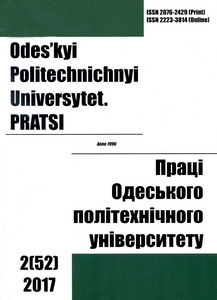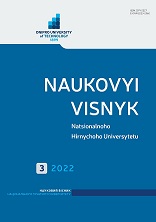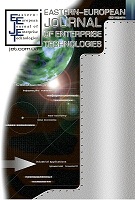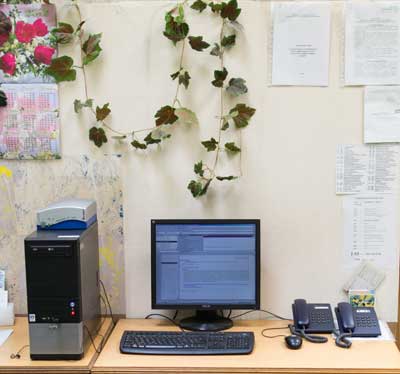
Бази даних
Наукова періодика України - результати пошуку
 |
Для швидкої роботи та реалізації всіх функціональних можливостей пошукової системи використовуйте браузер "Mozilla Firefox" |
|
|
Повнотекстовий пошук
| Знайдено в інших БД: | Реферативна база даних (8) |
Список видань за алфавітом назв: Авторський покажчик Покажчик назв публікацій  |
Пошуковий запит: (<.>A=Solonenko L$<.>) | |||
|
Загальна кількість знайдених документів : 9 Представлено документи з 1 до 9 |
|||
| 1. | 
Solonenko L. System analysis of modern areas of increasing environmental and sanitary hygienic safety of using cold hardening mixtures in foundry [Електронний ресурс] / L. Solonenko, S. Repyakh, I. Prokopovich, K. Sukhoi, D. Dmytrenko // Праці Одеського політехнічного університету. - 2019. - Вип. 1. - С. 90-98. - Режим доступу: http://nbuv.gov.ua/UJRN/Popu_2019_1_13 На сьогоднішній день Україна є однією з найбільш забруднених техногенними речовинами країн світу, де в промислових регіонах концентрація токсичних і канцерогенних речовин щодня перевищує в 2 і більше разів їх гранично допустиму концентрацію. Причиною цього є складна екологічна обстановка в Україні. Високий рівень забруднення атмосферного повітря пов'язують із підвищеним вмістом у ньому формальдегіду, фенолу, фтористого водню, аміаку, а також пилу, діоксиду азоту та оксиду вуглецю. Одним із джерел надходження в навколишнє середовище таких речовин є ливарні цехи, які використовують у своїх технологічних процесах синтетичні смоли. Мета роботи - провести вибір найбільш перспективного напрямку розробки сполучного матеріалу та способу виготовлення ливарних форм і стрижнів із точки зору їх екологічної безпеки та відповідності санітарно-гігієнічним нормам виробництва лиття. У ливарних цехах України системи уловлювання, утилізації та переробки газів, що виділяються із залитих форм, як правило, відсутні. Частка токсичних речовин (фенол, бензол, толуол, крезол, формальдегід, аміак та ін.), що виділяються з форм і стрижнів у вигляді газів і конденсату, становить 30 - 40 % (по масі) всіх викидів ливарного цеху. Крім цього, залишки смоли та затверджувача в відпрацьованої суміші, потрапляють у грунт і грунтові води, збільшуючи показники техногенного забруднення території України. Наведено результати системного аналізу впливу сучасних холоднотвердіючих сполучних матеріалів у ливарному виробництві на екологічну безпеку та санітарно-гігієнічні умови виробництва виливків. Показано, що використання в ливарних цехах як сполучні матеріали синтетичних смол посилює тяжкий екологічний стан в Україні. Незаперечні переваги піщано-рідкоскляних сумішей - низька собівартість, матеріали вітчизняного походження, можливість використання відпрацьованої суміші для виробництва рідкого скла в сукупності з вирішенням проблем, пов'язаних із технологічністю цих сумішей, надають можливість в більшості ливарних цехів України вирішити проблему забруднення навколишнього середовища та різкого поліпшення санітарно-гігієнічних умов виробництва лиття при зниженні витрат на його виробництво. Тому, розробка нових способів формоутворення з застосуванням сполучних матеріалів неорганічного походження, зокрема, рідкого скла, є актуальним завданням сьогодення. | ||
| 2. | 
Solonenko L. I. Heating rate of granular inorganic materials by microwave radiation [Електронний ресурс] / L. I. Solonenko, O. Р. Bilyi, S. I. Repiakh, T. V. Kimstach, K. I. Uzlov // Науковий вісник Національного гірничого університету. - 2020. - № 2. - С. 37-41. - Режим доступу: http://nbuv.gov.ua/UJRN/Nvngu_2020_2_8 Purpose. Determining heating rate of granular materials of inorganic origin used for manufacturing foundry molds and rods in the field of ultra-high frequency radiation, dependence of the heating rate of materials on the magnitude of their relative dielectric permeability, as well as establishing the influence of the chemical composition and structure of inorganic materials on their relative dielectric permeability. Methodology. Investigation was carried out on test material samples weighing 200 grams which were heated by microwave radiation with frequency of 2,45 GHz at nominal magnetron power of 700 W. Among the tested materials are: silicate block (soda), rutile, normal electro-corundum, zircon concentrate, distene-sillimanite concentrate, chamotte, quartz sand, sodium chloride, <$E beta>-gypsum (G4, closed), <$E alpha>-gypsum (G22, closed). Findings. According to the results of changing the initial temperature of samples, the heating rate of granular materials of inorganic origin and values of their relative dielectric permeability (e) were calculated. It has been found that investigated the heating rate of industrial-grade materials is in the range from 12 (for closed gypsum grade G22) to 122 <^>o | ||
| 3. | 
Solonenko L. I. Carbonization and crushability of structured sand-sodium-silicate mixtures [Електронний ресурс] / L. I. Solonenko, R. V. Usenko, K. I. Uzlov, A. V. Dziubina, S. I. Repiakh // Науковий вісник Національного гірничого університету. - 2020. - № 5. - С. 40-46. - Режим доступу: http://nbuv.gov.ua/UJRN/Nvngu_2020_5_8 Purpose. To identify the regularities of kinetics of carbonization process in thin layers of solidified sodium-silicate solution and to describe the mechanism of changes in surface strength of structured sand-sodium-silicate mixtures as per time. Methodology. Determination of ultimate compressive strength and crushability resistance was carried out on samples with dimensions of <$E symbol ж 50~times~50> mm. The samples were prepared from mixtures of quartz sand and 5 % by weight of binder material (sand-sodium-silicate mixture, phenol-formaldehyde resin), as well as quartz sand cladding with sand-sodium-silicate mixture. Sand-sodium-silicate mixture carbonization kinetics was studied in a layer of hollow glass balls, previously clad with liquid sodium sand-sodium-silicate mixture. Excerpt and determination of ball mass as per duration of their staying in the air were carried out in a climatic chamber. Ball surface appearance was recorded by microscopic photographing with an up to 25 times magnification. Influence of materials-modifiers on dehydrated sodium silicate solute carbonization was investigated by visual assessment of cladding layer surface of glass balls. For this matter, glass balls of <$E symbol ж 10> mm were cladded with pure or modified sodium silicate solute followed by air drying for 6 hours. Cladding layer surface quality was evaluated after 48 hours of exposure in the climate chamber at 24 - 28 <^>o | ||
| 4. | 
Solonenko L. I. Sodium silicate solute foaming in a flat slot-type capillary under microwave radiation influence [Електронний ресурс] / L. I. Solonenko, R. V. Usenko, A. V. Dziubina, K. I. Uzlov, S. I. Repiakh // Науковий вісник Національного гірничого університету. - 2020. - № 6. - С. 34-40. - Режим доступу: http://nbuv.gov.ua/UJRN/Nvngu_2020_6_7 Purpose. A mass transferring mechanism during liquid glass foaming in flat slot-type capillary under microwave radiation influence has been determined. Methodology. Sodium soda silicate solute with silicate module of 2,8 - 3,0 and specific gravity of 1,43 - 1,46 g/cm<^>3 | ||
| 5. | 
Solonenko L. I. Kinetics of quartz sand and its mixtures drying by microwave radiation [Електронний ресурс] / L. I. Solonenko, S. I. Repiakh, K. I. Uzlov, I. Mamuzich, T. V. Kimstach, O. P. Bilyi // Науковий вісник Національного гірничого університету. - 2021. - № 1. - С. 68-77. - Режим доступу: http://nbuv.gov.ua/UJRN/Nvngu_2021_1_12 Purpose. Kinetics research and description of drying by microwave radiation mechanism development of quartz sand and its mixes with sodium silicate in limited quantity of water steam medium. Methodology. Distilled water, sodium silicate solute and quartz sand have been used in this research. Study has been performed on sand samples weighing 200 g. Mixtures drying and structuring have been performed by microwave radiation with power of 700 W with frequency of 2,45 GHz in air and in saturated water weighing 1 g steam medium. Accuracy of temperature measurement is 1 <^>o | ||
| 6. | 
Solonenko L. Crushing character of sand-sodium-silicate mixtures structured by steam-microwave treatment [Електронний ресурс] / L. Solonenko, S. Repiakh, K. Uzlov, T. Kimstach // Праці Одеського політехнічного університету. - 2020. - Вип. 3. - С. 5-13. - Режим доступу: http://nbuv.gov.ua/UJRN/Popu_2020_3_3 На сьогоднішній день із числа відомих способів структурування піщано-рідкоскляних сумішей найменш дослідженим, але найбільш перспективним, є спосіб паро-мікрохвильового затвердіння. Мета роботи - встановити характер руйнування піщано-рідкоскляних сумішей, структурованих за способом паро-мікрохвильового затвердіння. Використано кварцовий пісок, плакований натрієвим рідким склом. Структурування суміші (плакованого піску) проведено мікрохвильовим випромінюванням за номінальної потужності магнетрона 700 Вт і частотою випромінювання 2,45 ГГц, використовуючи наважку води в суміші масою 1 г. Структури зразків суміші досліджено на растровому електронному та оптичному мікроскопі. Встановлено, що зі збільшенням масового вмісту рідкого скла для плакування кварцового піску від 0,5 до 6 % (за масою), а також зі збільшенням тривалості обробки суміші способом паро-мікрохвильового затвердіння межа міцності суміші у разі стиснення зростає по залежності близької до статечної. Характер руйнування структурованої суміші, у цьому випадку не залежить від вмісту рідкого скла, який пішов на плакування кварцового піску, але залежить від тривалості паро-мікрохвильового затвердіння зі збільшенням якого переходить від адгезійного до змішаного або від адгезійного до змішаного та когезійного. | ||
| 7. | 
Solonenko L. I. Sand-sodium-silicate mixtures structured in steam-microwave environment effective values of thermo-physical properties [Електронний ресурс] / L. I. Solonenko, S. I. Repiakh, K. I. Uzlov, A. V. Dziubina, S. O. Abramov // Naukovyi visnyk Natsionalnoho Hirnychoho Universytetu. - 2021. - № 6. - С. 66-71. - Режим доступу: http://nbuv.gov.ua/UJRN/Nvngu_2021_6_12 Purpose. Sand-sodium-silicate mixtures, structured by steam-microwave solidification, thermo-physical properties integral-effective values during Al-Mg alloy and graphite cast iron pouring determination. Sand-sodium-silicate mixture apparent density changing according to quartz sand, cladded with sodium silicate solute, fractional composition and its influence on BrA9Zh3L bronze microstructure establishment. Methodology. Quartz sand with 0,23 mm average particle size, sodium silicate solute, aluminum alloy with 8,5 % Mg, flake graphite cast iron SCh200 (DSTU 8833:2019), bronze BrA9Zh3L (GOST 493-79) were used. Mixtures structuring was carried out in 700 W magnetron power microwave furnace. Sand-sodium-silicate mixture thermo-physical properties integral-effective values were calculated by G. A. Anisovich method, using castings results and molds thermography. Structured mixtures apparent density was determined on samples <$Esymbol ж~50~times~120> mm dimension. Metallographic studies were realized using Neophot-21 optical microscope. Findings. It was found that with sodium silicate solute, used for sand cladding, amount increasing from 0,5 to 3 % mold material apparent density decreases and thermal activity lowers. This leads to castings grains size increasing. Mixture sodium silicate solute content was recommended limiting 1,5 % for fine-grained microstructure castings obtaining and cladded sand using, which particles pass through mesh side less 0,315 mm sieve. Sands with sodium silicate solute content more than 1,5 %, which don't pass through sieve 0,4 mm mesh side, were recommended as casting molds heat-insulating material using. Originality. For the first time, when aluminum-magnesium alloy and graphite cast iron pouring, quartz sand cladded with sodium silicate solute in amount from 0,5 to 3,0,% (weight, over 100 % quartz sand), steam-microwave radiation structured, thermo-physical properties integral-effective values were determined. Practical value. Data obtained using will improve castings solidification time and rate analytical calculations accuracy, forecast level and residual stresses sign in them, shrinkage defects locations. This will reduce casting technology developing time and costs and castings manufacturability. | ||
| 8. | 
Solonenko L. I. Influence of ice structure on vitability of frozen sand-water and sand-clay mixtures [Електронний ресурс] / L. I. Solonenko, K. I. Uzlov, T. V. Kimstach, Ya. V. Mianovska, D. Yu. Yakymenko // Naukovyi visnyk Natsionalnoho Hirnychoho Universytetu. - 2024. - № 1. - С. 32-40. | ||
| 9. | 
Povorotnii V. Determining the thermally-stressed state of motor-driven bowls for transporting liquid slag [Електронний ресурс] / V. Povorotnii, I. Shcherbyna, S. Zdanevych, N. Diachenko, T. Kimstach, L. Solonenko, R. Usenko // Eastern-European journal of enterprise technologies. - 2024. - № 1(7). - С. 99–106. - Режим доступу: http://nbuv.gov.ua/UJRN/Vejpte_2024_1(7)__12 | ||
 |
| Відділ наукової організації електронних інформаційних ресурсів |
 Пам`ятка користувача Пам`ятка користувача |